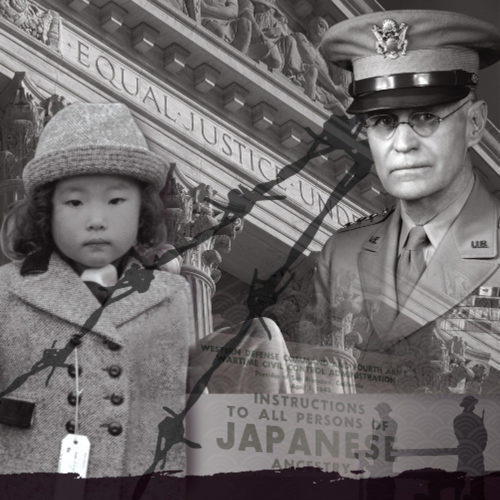When Rabbit Left the Moon is organized by the Asian Art Museum. Presentation is made possible by the Henri and Tomoye Takahashi Charitable Foundation.

We present Emiko Omori's elegiac video poem, a meditation on personal memories and generational trauma, on the anniversary of the signing of the order that led to the incarceration of Japanese Americans during World War II.
“In 2022, I commemorate the 80th anniversary of my incarceration at the age of one by my government, the United States of America.” — Filmmaker Emiko Omori
When she was just one year old, filmmaker Emiko Omori was forcibly relocated with her family to the Poston “Relocation” Center in Arizona. She was one of approximately 40,000 children of Japanese ancestry who were incarcerated with their families during World War II. To mark the 80th anniversary of the signing of Executive Order 9066, which led to this mass imprisonment, the museum presents Omori’s video poem When Rabbit Left the Moon.
On Feb. 19, 1942, less than two months after the bombing of Pearl Harbor, President Franklin D. Roosevelt signed the executive order, which empowered the Secretary of War to designate military areas from which “any or all persons” could be excluded. This action cleared the way for 120,000 people of Japanese ancestry living on the West Coast (more than two-thirds of whom were U.S. citizens) to be imprisoned in remote camps in isolated parts of Arizona, Arkansas, Colorado, California, Utah, Idaho, and Wyoming until after the war had ended.
Omori’s video opens with vintage family photos and home movies of joyful picnics and seaside leisure. These images soon give way to those of an uprooted community: hastily packed suitcases and trunks; men, women, and children loaded onto railcars and buses; and vacated storefronts.
Contemporary footage of a journey into a harsh landscape is interspersed with images and excerpts of official documents that reveal the story of life in the camps. Without names, dates, or locations, this collage provokes open-ended questions about personal memories and a community’s sense of betrayal and loss as well as its collective resilience and resistance.
“When Rabbit Left the Moon is an elegy to the generation of my parents — the Issei [immigrants] — to the vibrant prewar American Japanese community, to the hopes and dreams that were torn away, and to the legacy of suffering that haunts us,” says Omori.
The video is presented alongside a doll that five-year-old Ibuki Hibi brought with her from her home in Hayward, California, to the Topaz concentration camp in Utah. Also on display are stones from the Heart Mountain concentration camp cemetery, each inscribed with a single character from the Lotus Sutra and deposited inside a secret drum at the site as devotional act.
ABOUT THE ARTIST
Emiko Omori began her career as a filmmaker and cinematographer in 1968, when there were few camerawomen and even fewer Asian American camerawomen. Her first job was as cinematographer/editor on the KQED-TV program “Newsroom.” She left KQED in 1972 and has since freelanced as a cinematographer on many award-winning films in addition to making her own films. In 1999, her documentary memoir “Rabbit in the Moon,” about her family’s imprisonment in a World War II American concentration camp, premiered at the Sundance Film Festival, was broadcast on PBS, and won an Emmy and numerous other awards.

Thursday, February 10, 6:30 PM
Join us for an evening of film, discussion, and music commemorating the 80th anniversary of Executive Order 9066. Learn more…
Image: Still image from When Rabbit Left the Moon, by Emiko Omori (American, b. 1940). Single-channel digital video with sound, 14 min. Courtesy of the artist. © Emiko Omori.
When Rabbit Left the Moon is organized by the Asian Art Museum. Presentation is made possible by the Henri and Tomoye Takahashi Charitable Foundation.
